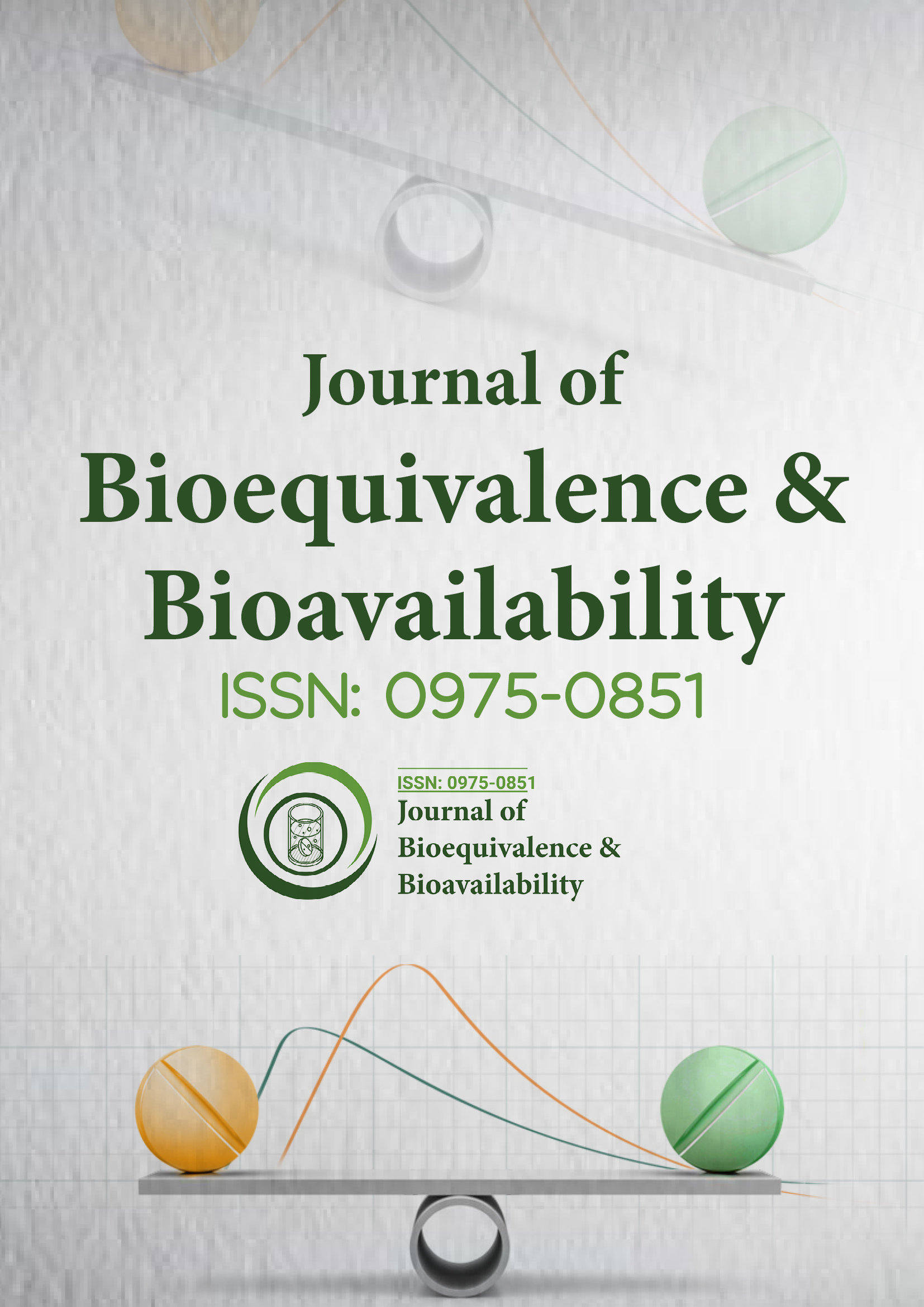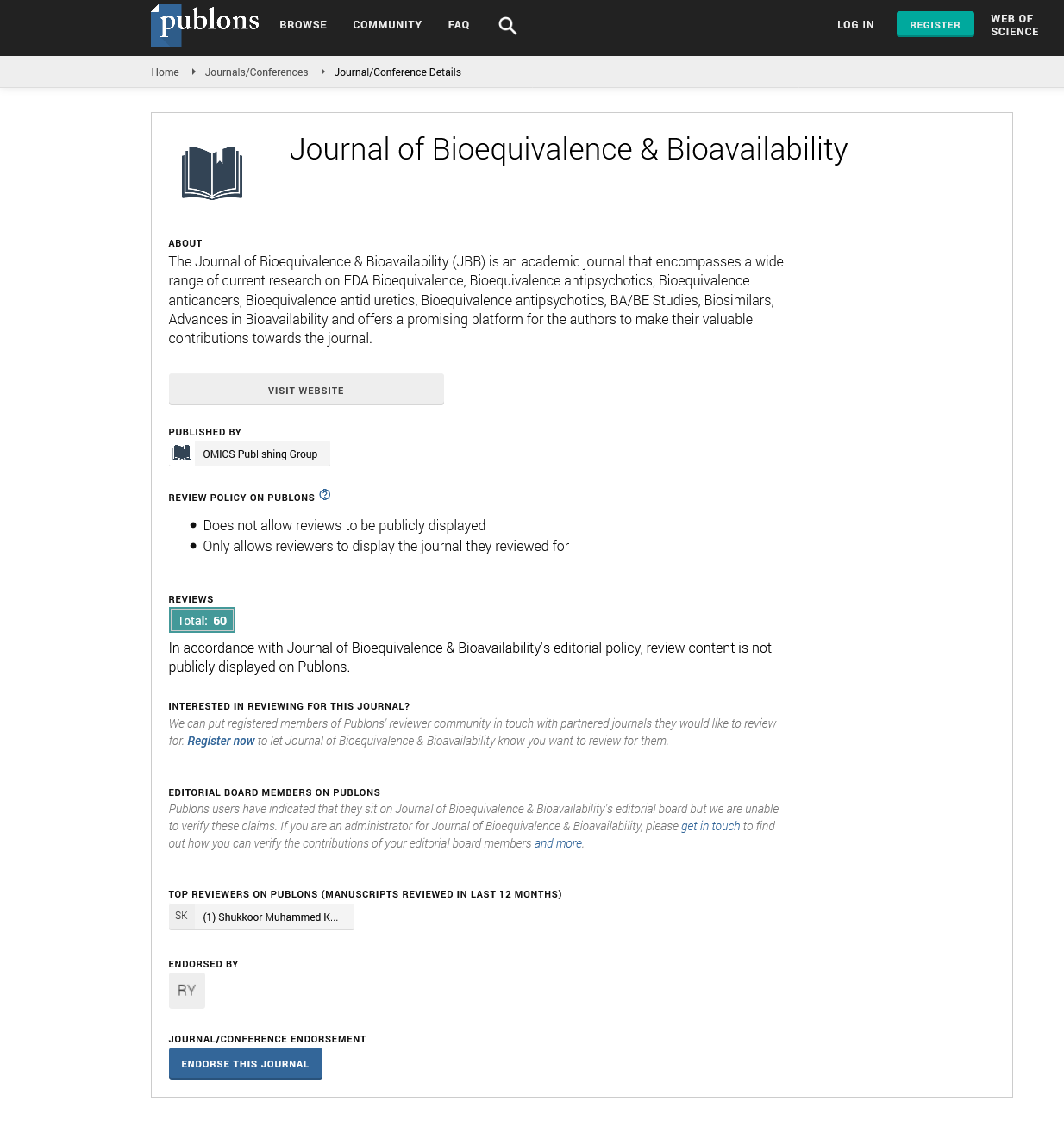Indexed In
- Academic Journals Database
- Open J Gate
- Genamics JournalSeek
- Academic Keys
- JournalTOCs
- China National Knowledge Infrastructure (CNKI)
- CiteFactor
- Scimago
- Ulrich's Periodicals Directory
- Electronic Journals Library
- RefSeek
- Hamdard University
- EBSCO A-Z
- OCLC- WorldCat
- SWB online catalog
- Virtual Library of Biology (vifabio)
- Publons
- MIAR
- University Grants Commission
- Geneva Foundation for Medical Education and Research
- Euro Pub
- Google Scholar
Useful Links
Share This Page
Journal Flyer

Open Access Journals
- Agri and Aquaculture
- Biochemistry
- Bioinformatics & Systems Biology
- Business & Management
- Chemistry
- Clinical Sciences
- Engineering
- Food & Nutrition
- General Science
- Genetics & Molecular Biology
- Immunology & Microbiology
- Medical Sciences
- Neuroscience & Psychology
- Nursing & Health Care
- Pharmaceutical Sciences
Commentary - (2025) Volume 17, Issue 2
Clinical Safety and Effectiveness of Bioequivalent Olanzapine in Schizophrenia Treatment
Shen Trang*Received: 03-Apr-2025, Manuscript No. JBB-24-28985; Editor assigned: 07-Apr-2025, Pre QC No. JBB-24-28985 (PQ); Reviewed: 21-Apr-2025, QC No. JBB-24-28985; Revised: 28-Apr-2025, Manuscript No. JBB-24-28985 (R); Published: 05-May-2025, DOI: 10.35248/0975-0851.25.17.632
Description
The importance of bioequivalence in antipsychotic medications cannot be overstated, particularly considering the chronic nature of psychiatric illnesses and the critical need for consistent therapeutic outcomes. Antipsychotics, used in the treatment of schizophrenia, bipolar disorder, and other severe mental health conditions, often form the cornerstone of long-term psychiatric care. Generic antipsychotics provide a cost-effective alternative to branded formulations, but only when bioequivalence has been rigorously demonstrated can clinicians and patients be assured of their safety, efficacy, and reliability. Given the unique pharmacodynamic and pharmacokinetic profiles of these drugs, establishing bioequivalence presents both scientific and regulatory challenges that must be addressed with precision.
Drugs like haloperidol, chlorpromazine, risperidone, olanzapine, quetiapine, and aripiprazole have become household names in psychiatric pharmacology, and their generic counterparts are extensively used across the globe. The development and approval of generic versions of these drugs rely on the core principle of bioequivalence, which ensures that the generic exhibits no significant difference in the rate and extent of drug absorption compared to the innovator product.
Extended-Release (ER) and Long-Acting Injectable (LAI) formulations of antipsychotics present additional complexity in bioequivalence assessment. These formulations are designed to maintain steady plasma drug levels over extended periods, thereby improving adherence and reducing relapse rates. For example, paliperidone palmitate, a long-acting injectable form of paliperidone, is used monthly or even quarterly in the treatment of schizophrenia. Demonstrating bioequivalence for such formulations goes beyond simple pharmacokinetic studies; it often involves bridging studies, simulations, and in some cases, comparative clinical efficacy trials. The intricacies of depot release, absorption from the injection site, and patient-specific metabolism all influence systemic exposure and must be carefully evaluated.
Psychiatric patients are often concerned about changes in their medication regimen, especially when switching from a branded drug to a generic version. Perceived differences in effectiveness or tolerability can lead to nonadherence, which in turn increases the risk of relapse or hospitalization. This psychological aspect underscores the importance of ensuring that bioequivalent antipsychotics not only meet regulatory standards but also inspire confidence among patients and healthcare providers. Clear communication, therapeutic drug monitoring, and clinician oversight during the switch can mitigate these concerns and ensure continuity of care.
Post-marketing surveillance plays an indispensable role in validating the clinical bioequivalence of antipsychotic generics. Real-world evidence, collected through pharmacovigilance systems, electronic health records, and patient registries, provides insights into the long-term safety and effectiveness of generic formulations. Adverse event reporting and comparative effectiveness research can uncover potential discrepancies in therapeutic outcomes, prompting regulatory review or label revisions. This dynamic feedback loop ensures that bioequivalence is not just a pre-approval hurdle but a continuous commitment to quality.
The economic benefits of bioequivalent antipsychotics are substantial. Psychiatric care often entails long-term medication use, and the availability of affordable generics can ease the financial burden on patients, families, and healthcare systems. This is particularly important in low- and middle-income countries, where access to mental healthcare is limited and branded medications may be prohibitively expensive. By enabling broader access to treatment, bioequivalent antipsychotics contribute to reducing the global burden of mental illness and improving quality of life for millions.
Manufacturing consistency is another pillar of successful bioequivalent drug deployment. Any changes in excipients, tablet coatings, or production methods must be rigorously evaluated to ensure they do not alter drug release or absorption. Regulatory agencies monitor these changes through supplemental applications and manufacturing audits. Quality assurance processes, including dissolution testing and stability studies, further safeguard the integrity of generic antipsychotics throughout their shelf life.
In conclusion, bioequivalence in antipsychotic medications is a critical component of psychiatric care that ensures the safe, effective, and economical use of generics. The rigorous scientific and regulatory processes underlying bioequivalence assessments provide a robust framework for comparing generic and branded drugs. As the field evolves, continued investment in research, regulatory innovation, and patient engagement will be essential to maintaining the integrity of antipsychotic treatment and advancing global mental health.
Citation: Trang S (2025). Clinical Safety and Effectiveness of Bioequivalent Olanzapine in Schizophrenia Treatment. J Bioequiv Availab. 17:632.
Copyright: © 2025 Trang S. This is an open-access article distributed under the terms of the Creative Commons Attribution License, which permits unrestricted use, distribution, and reproduction in any medium, provided the original author and source are credited.

